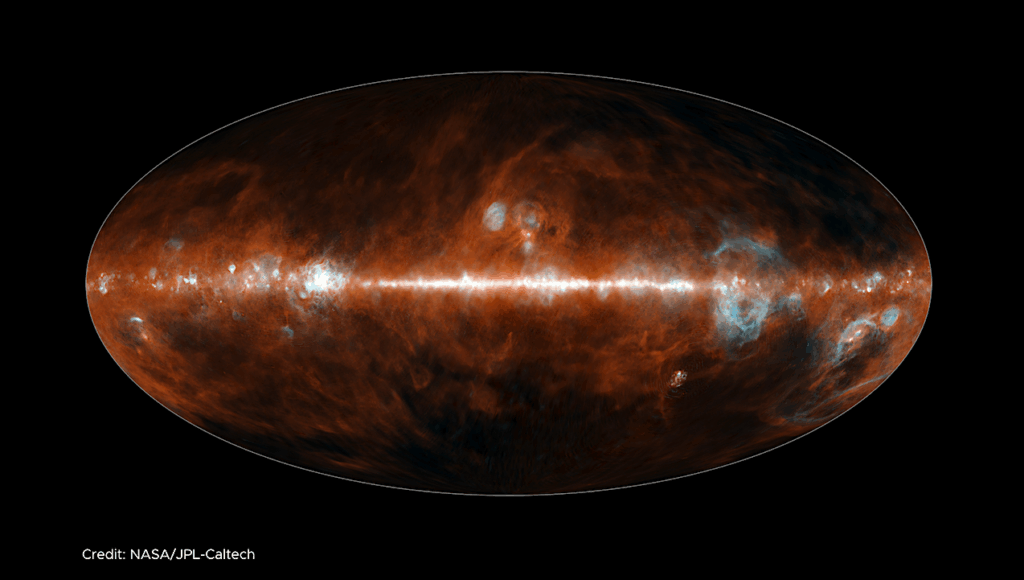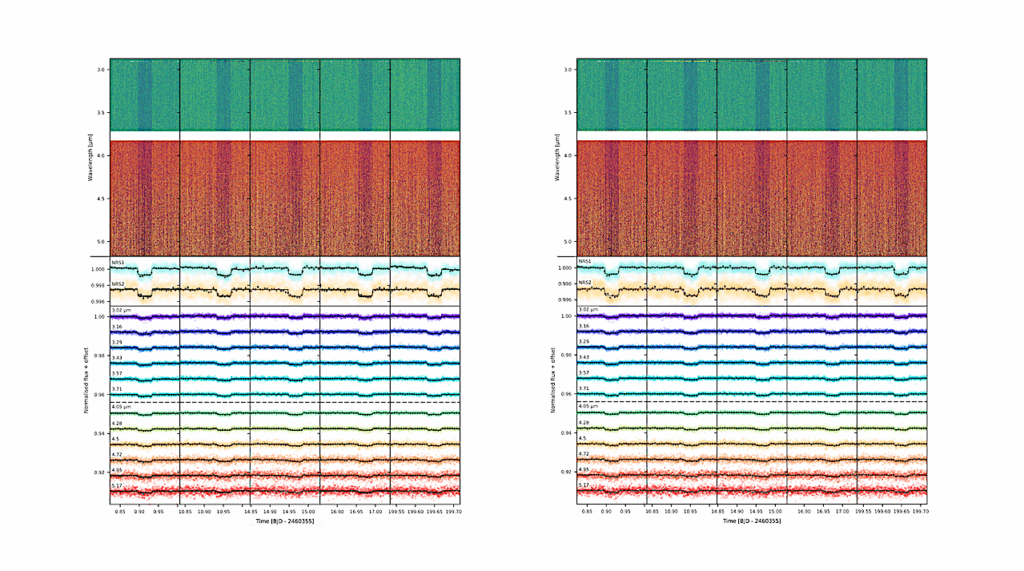Now Reading: Probing The Physics Of Dusty Outflows Through Complex Organic Molecules In The Early Universe
-
01
Probing The Physics Of Dusty Outflows Through Complex Organic Molecules In The Early Universe
Probing The Physics Of Dusty Outflows Through Complex Organic Molecules In The Early Universe
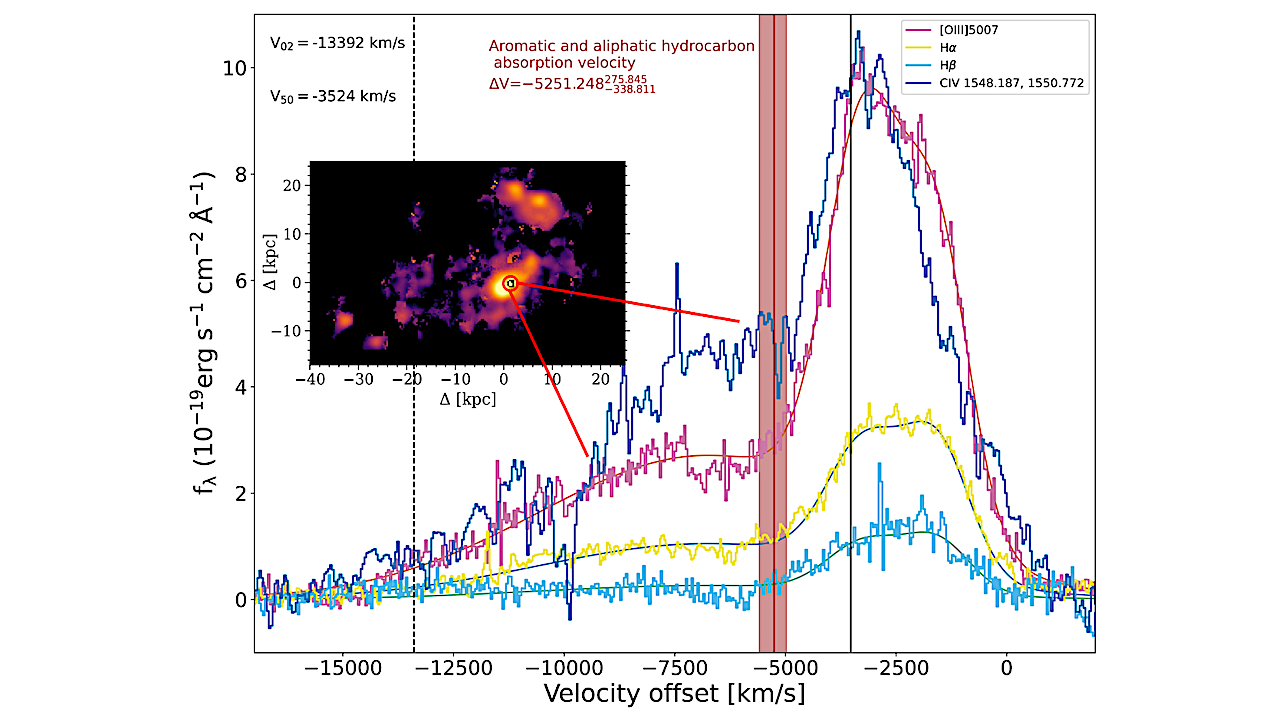
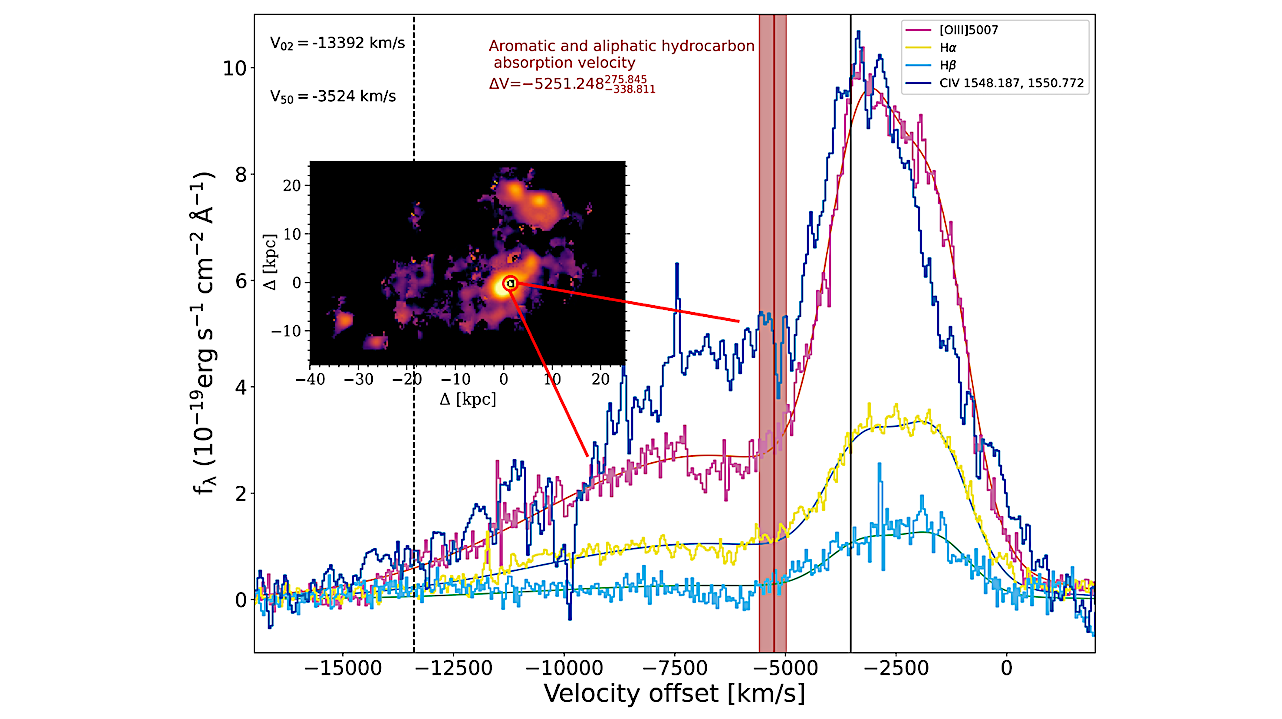
Line profiles of ionized emission from the outflow in the nuclear region of W2246- 0526, marked with a red circle in the inserted figure showing the extended Hα emission in the W2246-0526 system, adapted from Vayner et al 2025 (40). Extremely broad and blueshifted emission is detected in [O III], Hα and Hβ, with maximum velocities of -13,400 km s−1 (V02), where 0 km s−1 is systemic. The detection of [O III] indicates that this emission originates beyond the broad-line region of the quasar. We also overlay the CIV λλ 1548 A, 1550 A emission line spectrum from rest-frame UV observations taken by the MUSE instrument, showing a similar profile to the optical lines. The solid black line shows the average velocity of the profile (V50). The red line shows the velocity of the dusty outflow traced through aromatic and aliphatic hydrocarbon absorption. — astro-ph.GA
Galaxy-scale outflows are of critical importance for galaxy formation and evolution. Dust grains are the main sites for the formation of molecules needed for star formation but are also important for the acceleration of outflows that can remove the gas reservoir critical for stellar mass growth.
Using the MIRI medium-resolution integral field spectrograph aboard the James Webb Space Telescope (JWST), we detect the 3.28 μm aromatic and the 3.4 μm aliphatic hydrocarbon dust features in absorption in a redshift 4.601 hot dust-obscured galaxy, blue-shifted by ΔV=−5250+276−339 kms−1 from the systemic redshift of the galaxy.
The extremely high velocity of the dust indicates that the wind was accelerated by radiation pressure from the central quasar. These results pave a novel way for probing the physics of dusty outflows in active galaxies at early cosmic time.
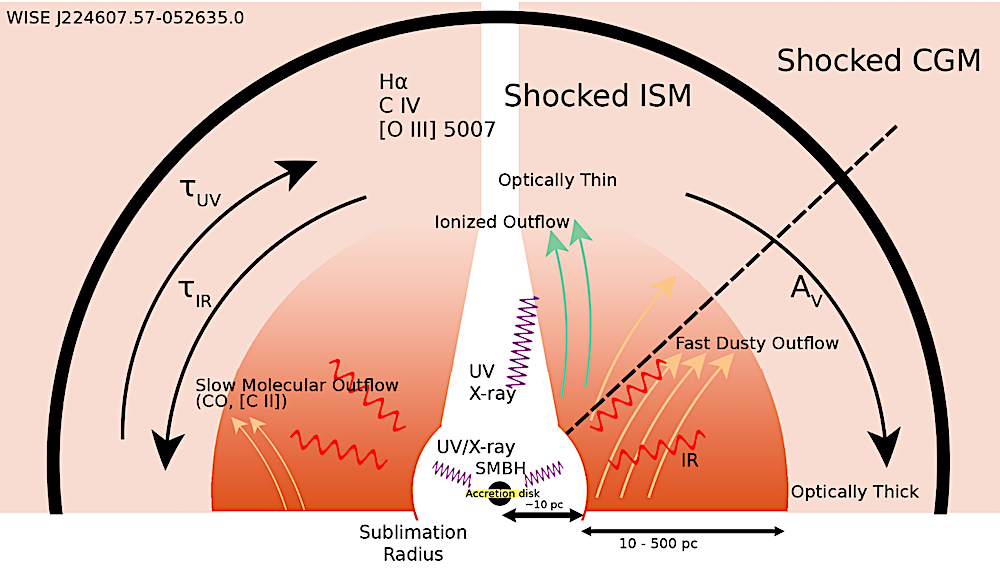
Schematic diagram of the inner kpc region of the W2246-0526 system. The supermassive black hole (SMBH) and the quasar accretion disk are located in the center. Surrounding the accretion disk is a dust-dominated region with a large covering solid angle around the quasar accretion disk and the broad-line region. High dust opacities, large column densities, and optically thick regions are located near the equatorial plane, with beige to orange colors representing an increase in these quantities. Past the dust sublimation radius, low to medium-latitude regions are dominated by infrared photons (red) formed through reprocessing UV photons originating from the quasar accretion disk. Light orange arrows mark the dusty outflow driven by radiation pressure from the infrared photons near the sublimation radius, and our line of sight crossing the path is marked with a dashed black line. Along the polar region, the column densities drop, allowing ionizing, UV, and optical photons to escape. The ionized outflow photo-ionized by the quasar likely escapes along this path. Part of the ionized emitting region is interior to the dusty outflow causing reddening of the emission, however not at a level to completely obscure it. — astro-ph.GA
Andrey Vayner, Tanio Díaz-Santos, Carl D. Ferkinhoff, Peter R. M. Eisenhardt, Daniel Stern, Lee Armus, Brandon S. Hensley, Daniel Anglés-Alcázar, Roberto J. Assef, Román Fernández Aranda, Andrew W. Blain, Hyunsung D. Jun, Norman W. Murray, Shelley Wright, Chao-Wei Tsai, Thomas Lai, Niranjan Chandra Roy, Drew Brisbin, Manuel Aravena, Jorge González-López, Guodong Li, Mai Liao, Devika Shobhana, Jingwen Wu, Dejene Zewdie
Comments: 47 pages, 9 figures, 2 tables, submitted. Comments are welcome!
Subjects: Astrophysics of Galaxies (astro-ph.GA)
Cite as: arXiv:2510.09870 [astro-ph.GA] (or arXiv:2510.09870v1 [astro-ph.GA] for this version)
https://doi.org/10.48550/arXiv.2510.09870
Focus to learn more
Submission history
From: Andrey Vayner
[v1] Fri, 10 Oct 2025 21:06:51 UTC (4,587 KB)
https://arxiv.org/abs/2510.09870
Astrobiology, Astrochemistry,
Stay Informed With the Latest & Most Important News
Previous Post
Next Post
-
 01From Polymerization-Enabled Folding and Assembly to Chemical Evolution: Key Processes for Emergence of Functional Polymers in the Origin of Life
01From Polymerization-Enabled Folding and Assembly to Chemical Evolution: Key Processes for Emergence of Functional Polymers in the Origin of Life -
 02Panasonic Leica Summilux DG 15mm f/1.7 ASPH review
02Panasonic Leica Summilux DG 15mm f/1.7 ASPH review -
 03How New NASA, India Earth Satellite NISAR Will See Earth
03How New NASA, India Earth Satellite NISAR Will See Earth -
 04And Thus Begins A New Year For Life On Earth
04And Thus Begins A New Year For Life On Earth -
 05Astronomy Activation Ambassadors: A New Era
05Astronomy Activation Ambassadors: A New Era -
06SpaceX launch surge helps set new global launch record in 2024
-
 07Two Black Holes Observed Circling Each Other for the First Time
07Two Black Holes Observed Circling Each Other for the First Time












